Search Result
Results for "
flavor
" in MedChemExpress (MCE) Product Catalog:
14
Biochemical Assay Reagents
20
Isotope-Labeled Compounds
| Cat. No. |
Product Name |
Target |
Research Areas |
Chemical Structure |
-
- HY-N9452
-
|
|
Others
|
Others
|
|
Capsaicin β-D-glucopyranoside is a glucoside converted by Capsaicin. Capsaicin is the active ingredient of chili peppers and gives them the characteristic pungent flavor .
|
-
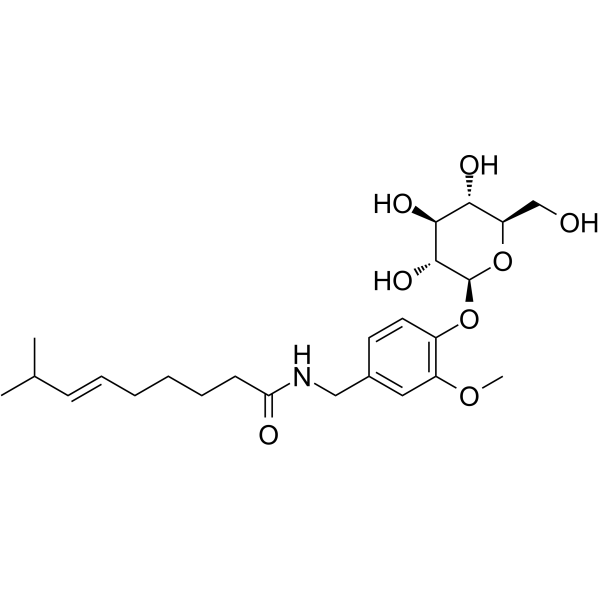
-
- HY-W017212
-
|
Methyl 3-phenylpropenoate
|
Tyrosinase
Bacterial
AMPK
|
Infection
Metabolic Disease
|
|
Methyl cinnamate (Methyl 3-phenylpropenoate), an active component of Zanthoxylum armatum, is a widely used natural flavor compound. Methyl cinnamate (Methyl 3-phenylpropenoate) possesses antimicrobial activity and is a tyrosinase inhibitor that can prevent food browning. Methyl cinnamate (Methyl 3-phenylpropenoate) has antiadipogenic activity through mechanisms mediated, in part, by the CaMKK2-AMPK signaling pathway .
|
-
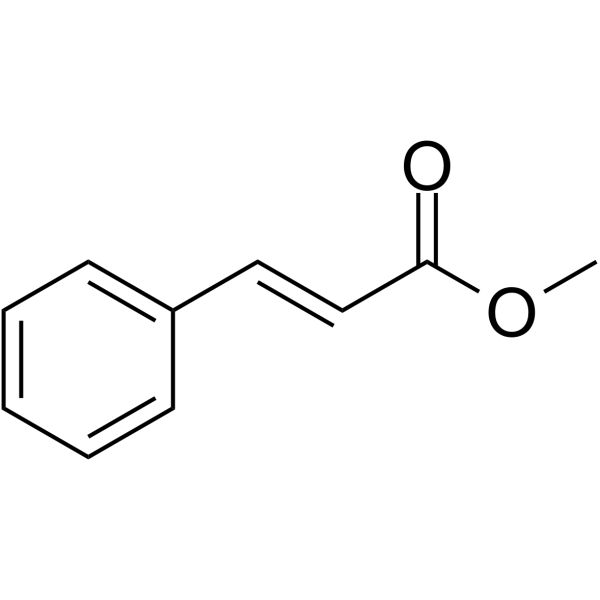
-
- HY-W014884
-
|
Decanoic Acid Ethyl Ester
|
Biochemical Assay Reagents
|
Others
|
|
Ethyl decanoate is an organic compound commonly used as a flavoring and food additive. It can be used to prepare flavors and food seasonings with various flavors, and is widely used in food, flavors and cosmetics. In addition, this compound is also used as a substrate or intermediate in some biochemical reactions.
|
-
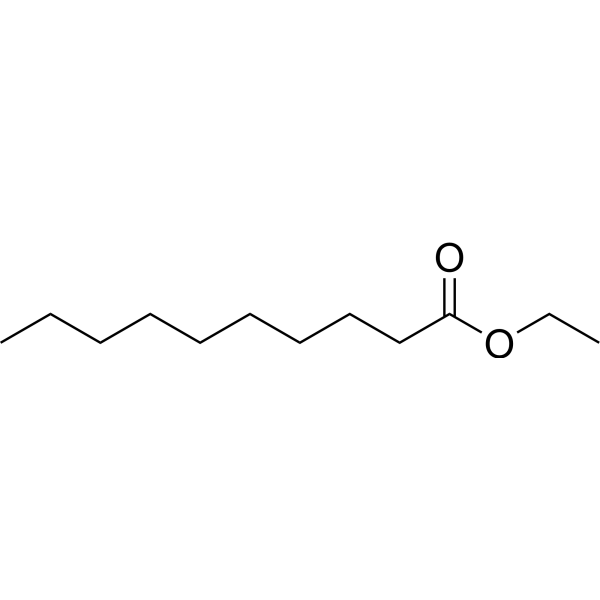
-
- HY-W337739
-
|
Monopotassium L-glutamate
|
Others
|
Others
|
|
L-Glutamic acid monopotassium salt is a food additive and flavor enhancer that can reduce the harmful effects of lithium .
|
-
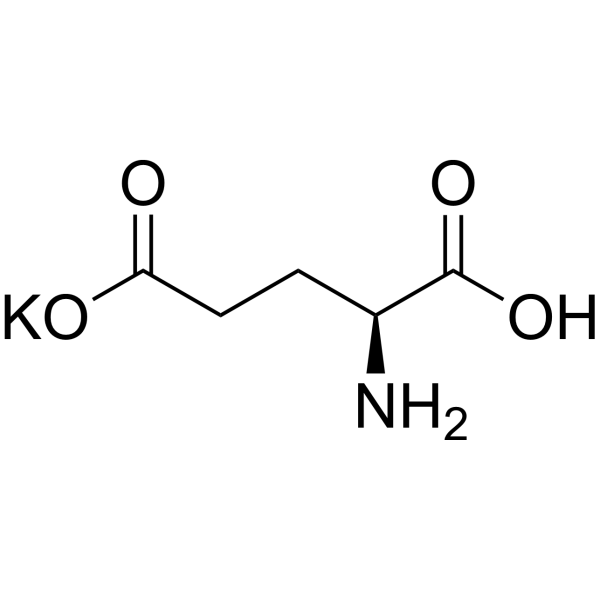
-
- HY-W067056
-
|
Methyl (E)-3-phenylpropenoate
|
Others
|
Inflammation/Immunology
|
|
Methyl (E)-cinnamate (EMC), a phytochemical constituent isolated from Alpinia katsumadai Hayata, is a natural flavor compound with anti-inflammatory properties. Methyl (E)-cinnamate is widely used in the food and commodity industry .
|
-
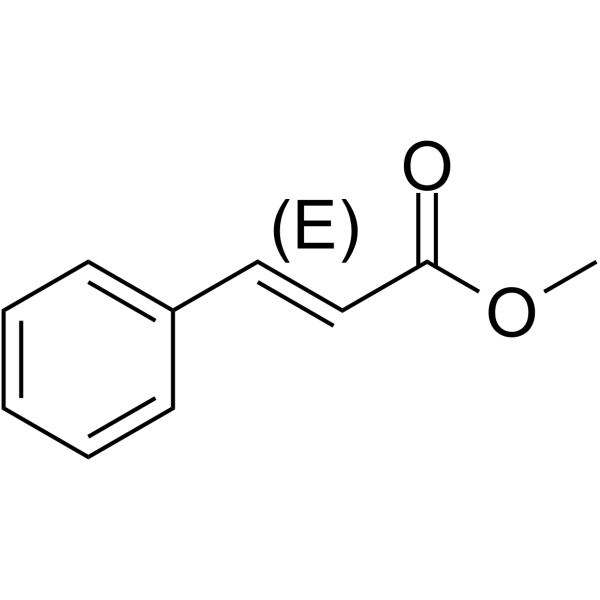
-
- HY-W009443
-
|
Diethyl sebacate
|
Biochemical Assay Reagents
|
Others
|
|
Diethyl decanedioate is an organic compound commonly used as a raw material for flavors and food additives. It can be used to make fruit and mint flavors, and is widely used in some food processing and cosmetic production. In addition, this compound is also used as a reagent and intermediate in some organic synthesis reactions.
|
-
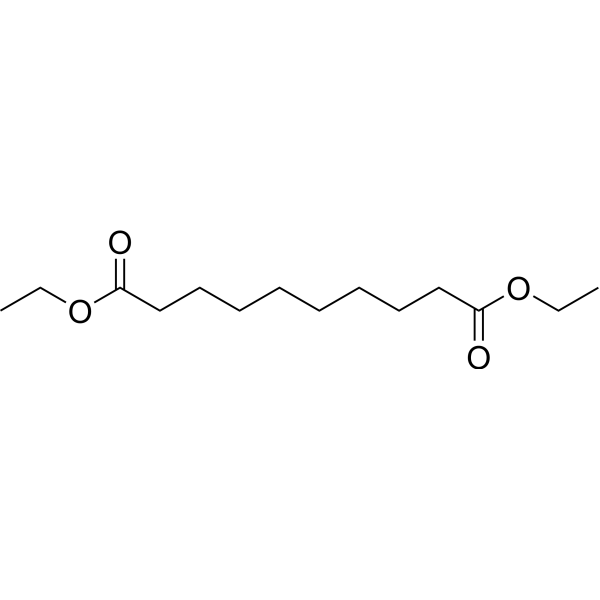
-
- HY-W010516
-
|
2-Methylpentanoic acid
|
Endogenous Metabolite
|
Metabolic Disease
|
|
2-Methylvaleric acid (2-Methylpentanoic acid) is a short-chain fatty acid isolated from Campomanesia adamantium and dairy products. 2-Methylvaleric acid is also found in animal feces. 2-Methylvaleric acid is a flavor compound used for food-flavor ingredient, fragrances .
|
-
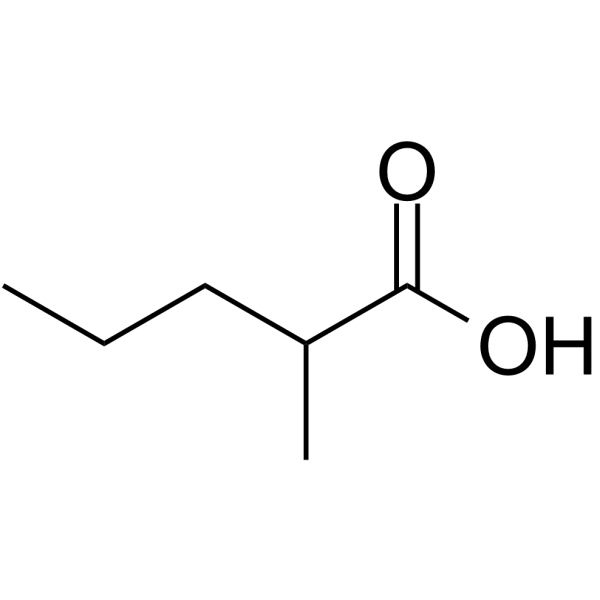
-
- HY-128389
-
|
|
Others
|
Others
|
|
1-Furfurylpyrrole has been identified as a potential contributor of flavor and aroma to popcorn.
|
-
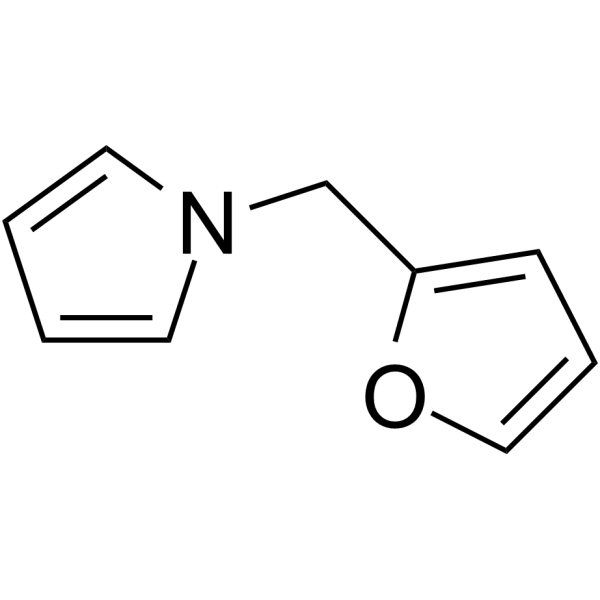
-
- HY-N7125
-
|
|
Bacterial
|
Others
|
|
Cinnamyl acetate has a wide application in the flavor and fragrance industry . Cinnamyl acetate is a new broad spectrum antibacterial agent .
|
-

-
- HY-W015695
-
-

-
- HY-W015580
-
|
|
Biochemical Assay Reagents
|
Others
|
|
(+)-Fenchone exists in fennel seed oil (Foenicufum vulgare Mill.) and in the oil of Lavandula stoechas. Fenchone is used as a flavor in foods and in perfumery .
|
-

-
- HY-N0756
-
|
|
Apoptosis
|
Cancer
|
|
Bornyl acetate is a potent odorant, exhibiting one of the highest flavor dilution factor (FD factor). Bornyl acetate possesses anti-cancer activity .
|
-
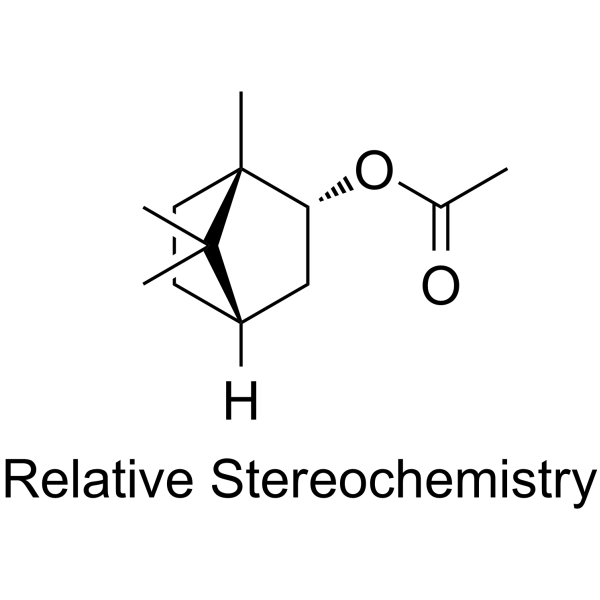
-
- HY-50730
-
|
|
Parasite
Endogenous Metabolite
|
Infection
|
|
Asparagusic acid is a sulfur-containing flavor component produced by Asparagus officinalis Linn., with anti-parasitic effect. Asparagusic acid is a plant growth inhibitor .
|
-
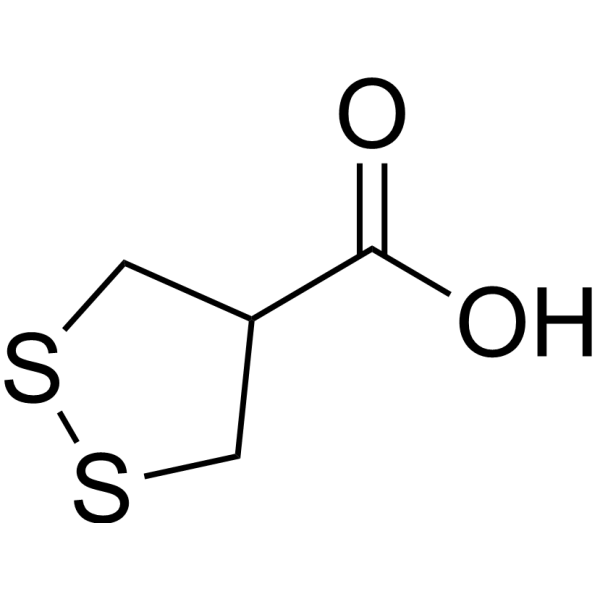
-
- HY-111825A
-
|
Isoalliin; trans-(+)-S-1-Propenyl-L-cysteine sulfoxide
|
Others
|
Others
|
|
(R)-1-PeCSO (trans-(+)-S-1-Propenyl-L-cysteine sulfoxide) is the most abundant flavor precursor in onions .
|
-

-
- HY-W012788
-
Maltol
2 Publications Verification
|
Endogenous Metabolite
|
Others
|
|
Maltol, a type of aromatic compound, exists in high concentrations in red ginseng. Maltol is a potent antioxidative agent and typically is used to enhance flavor and preserve food .
|
-
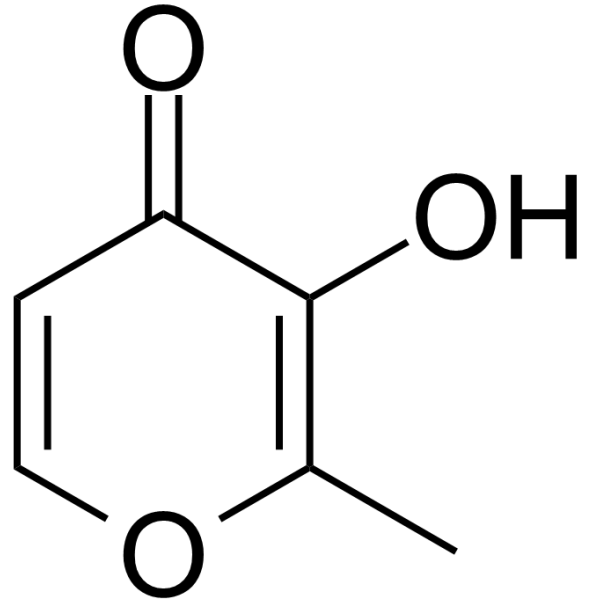
-
- HY-Y0121
-
|
|
Others
|
Others
|
|
Ethyl cinnamate is a fragrance ingredient used in many fragrance compounds. Ethyl cinnamate is a food flavor and additive for cosmetic products. Ethyl cinnamate is also an excellent clearing reagent for mammalian tissues .
|
-
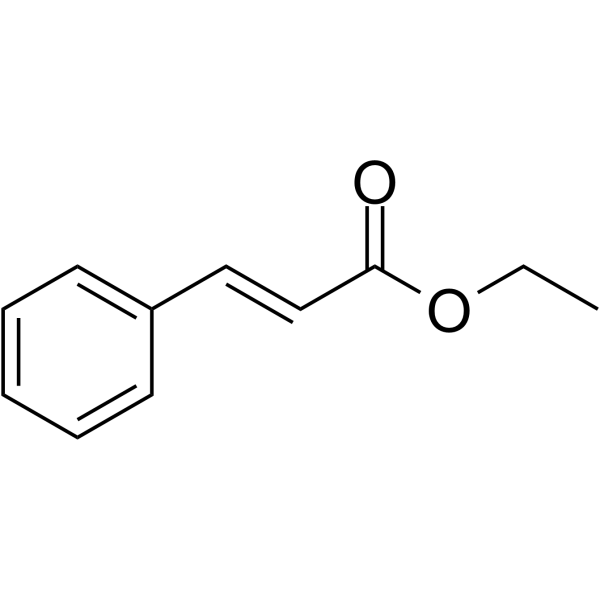
-
- HY-W016278
-
|
|
Biochemical Assay Reagents
|
Others
|
|
Gamma-undecalactone consists of a five-membered dihydrofuran ring with an ester group and a heptyl chain. This compound has a fruity smell and is commonly used as a flavor additive in various food and beverage products such as coffee, tea and baked goods.
|
-

-
- HY-W011053
-
|
|
Others
|
Others
|
|
Neotame is a derivative of Aspartame and is a low-caloric and high-intensity artificial sweetener that is 7000-13,000 times sweeter than sugar. Neotame is a non-nutritive sweetener and flavor enhancer that can be used in a variety of foods .
|
-
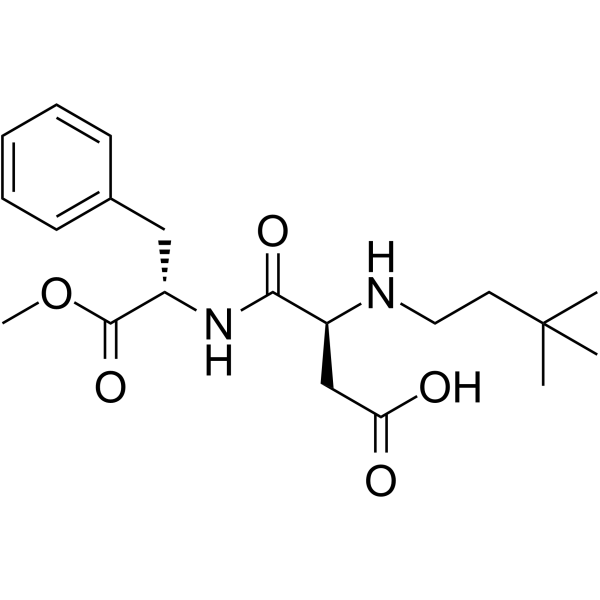
-
- HY-W022036
-
|
Guaethol; Guethol; NSC 180
|
Biochemical Assay Reagents
|
Others
|
|
2-Ethoxyphenol, also known as guaiacol ethyl ether, consists of a phenolic ring and an ethoxy group connected to the 2-position. The compound has a sweet, smoky flavor and is commonly used as a flavoring in foods such as baked goods, candy and beverages.
|
-
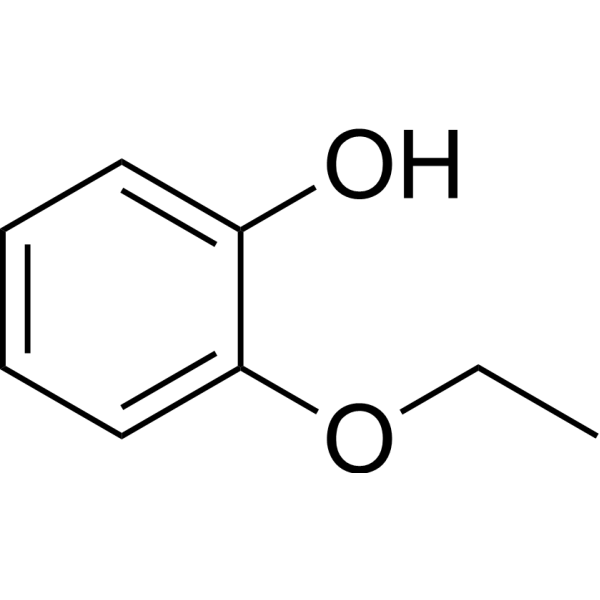
-
- HY-N7105
-
|
|
Biochemical Assay Reagents
|
Others
|
|
Gamma-decalactone, γ-decalactone is used as an essential food additive with a ruity peach flavor . Ricinoleic acid (12-hydroxy-octadec-9-enoic acid) is used as the substrate in most production processes of γ-decalactone .
|
-
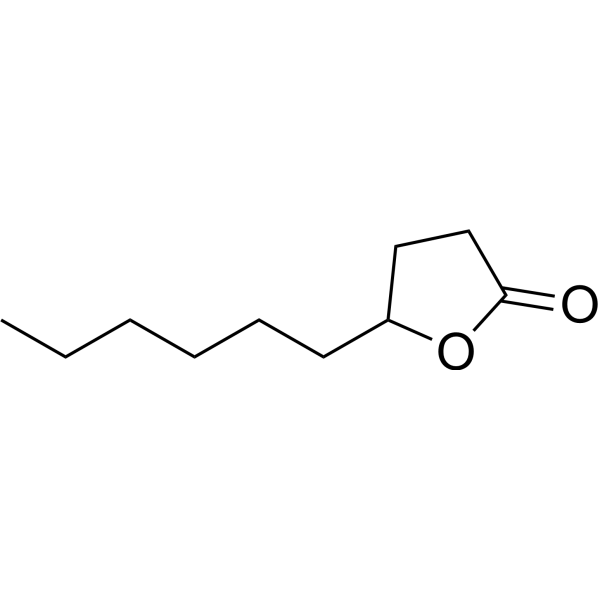
-
- HY-148937
-
|
|
Others
|
Others
|
|
Oroselol is a coumarin commonly found in a variety of plants, especially in the roots of angelica plants and the bark of cinnamon trees. Oroselol has potential medicinal properties, including anti-inflammatory, antioxidant and anti-tumor effects. Oroselol can be used in the production of fragrances, flavors and medicines
|
-

-
- HY-W012788S
-
|
|
Isotope-Labeled Compounds
|
Cancer
|
|
Maltol-d3 is a deuterium labeled Maltol (HY-W012788). Maltol, a type of aromatic compound, exists in high concentrations in red ginseng. Maltol is a potent antioxidative agent and typically is used to enhance flavor and preserve food .
|
-
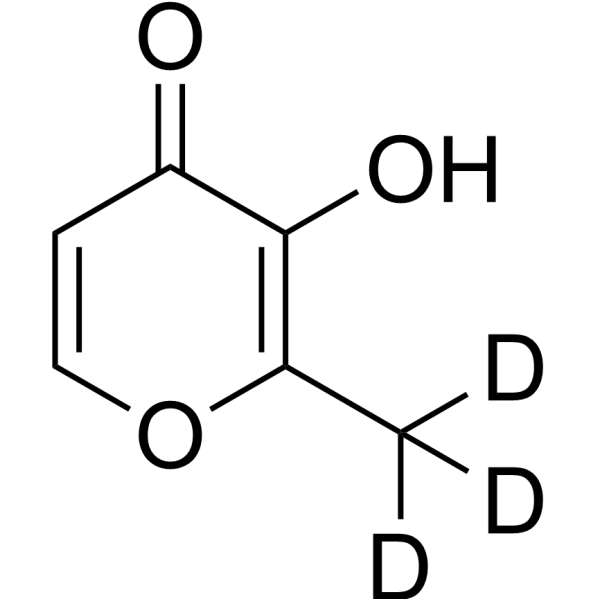
-
- HY-W014394
-
|
|
Others
|
Cardiovascular Disease
|
|
Vanillyl butyl ether is a major contributor to the characteristic flavor and fragrance of vanilla. Vanillyl butyl ether is one of the eco-friendly and nontoxic substances. Vanillyl butyl ether has been proposed as a mild warming agent providing a warming sensation and enhancing the blood circulation .
|
-
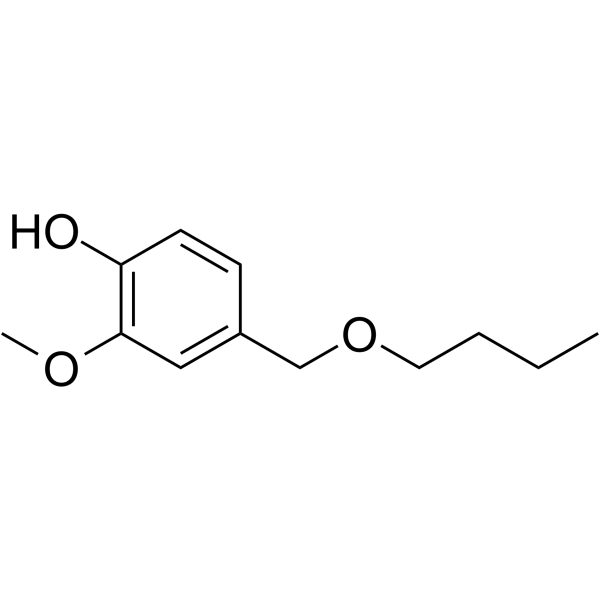
-
- HY-W009684
-
|
Ethyl dodecanoate
|
Biochemical Assay Reagents
|
Others
|
|
Ethyl Laurate is an organic compound commonly used as a flavoring and food additive. It can be used to make fruit, mint and sweet flavors, and is widely used in some food processing and cosmetic production. In addition, this compound is also used as a reagent and intermediate in some organic synthesis reactions.
|
-
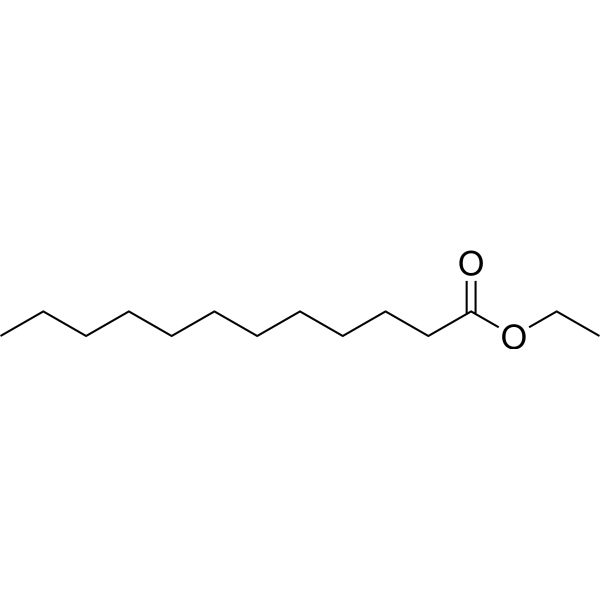
-
- HY-N6636
-
|
|
NF-κB
|
Inflammation/Immunology
|
|
Valencene is a sesquiterpene isolated from Cyperus rotundus, possesses antiallergic, antimelanogenesis, anti-infammatory, and antioxidant activitivies. Valencene inhibits the exaggerated expression of Th2 chemokines and proinflammatory chemokines through blockade of the NF-κB pathway. Valencene is used to flavor foods and drinks .
|
-
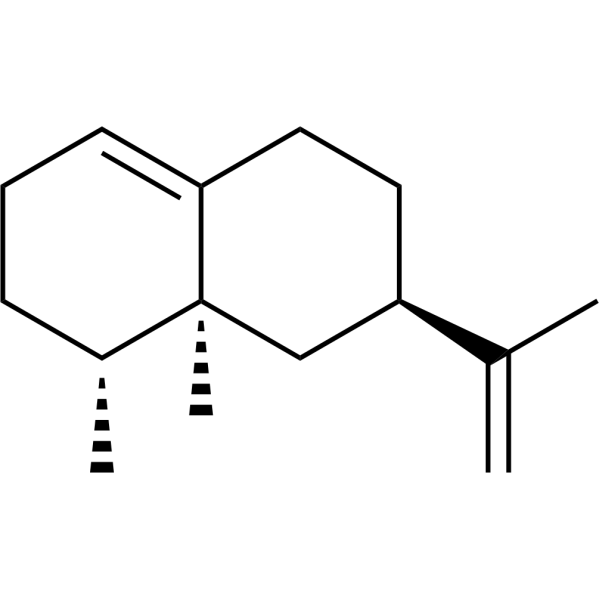
-
- HY-W011053S
-
|
|
Isotope-Labeled Compounds
|
Others
|
|
(R)-Neotame-d3 is the deuterium labeled Neotame. Neotame is a derivative of Aspartame and is a low-caloric and high-intensity artificial sweetener that is 7000-13,000 times sweeter than sugar. Neotame is a non-nutritive sweetener and flavor enhancer that can be used in a variety of foods[1][2].
|
-
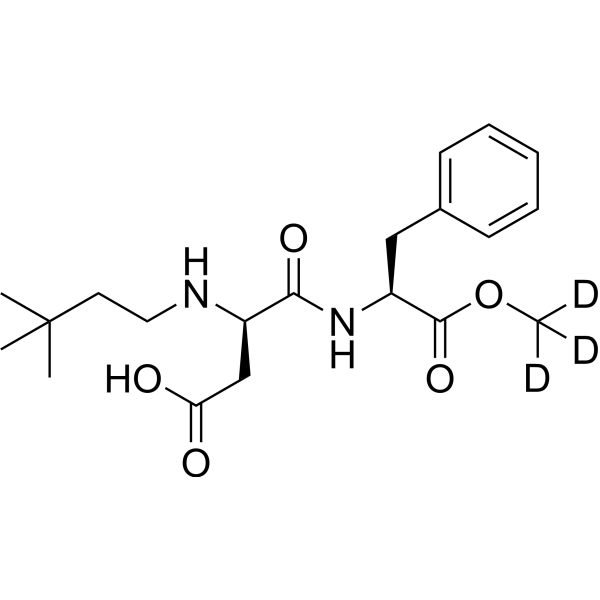
-
- HY-W012995
-
|
|
Biochemical Assay Reagents
|
Others
|
|
5-Hexen-1-ol, is an aromatic substance with aromas similar to substances such as herbs, tea and citrus. Therefore, it is usually used in the food, fragrance and perfume industries, and is widely used in the preparation of various food flavors, fragrances, taste flavoring agents, essential oils and cosmetics and other products.
|
-

-
- HY-Y0121S
-
|
|
Isotope-Labeled Compounds
|
Others
|
|
Ethyl cinnamate-d5 is the deuterium labeled Ethyl cinnamate[1]. Ethyl cinnamate is a fragrance ingredient used in many fragrance compounds. Ethyl cinnamate is a food flavor and additive for cosmetic products. Ethyl cinnamate is also an excellent clearing reagent for mammalian tissues[2][3].
|
-
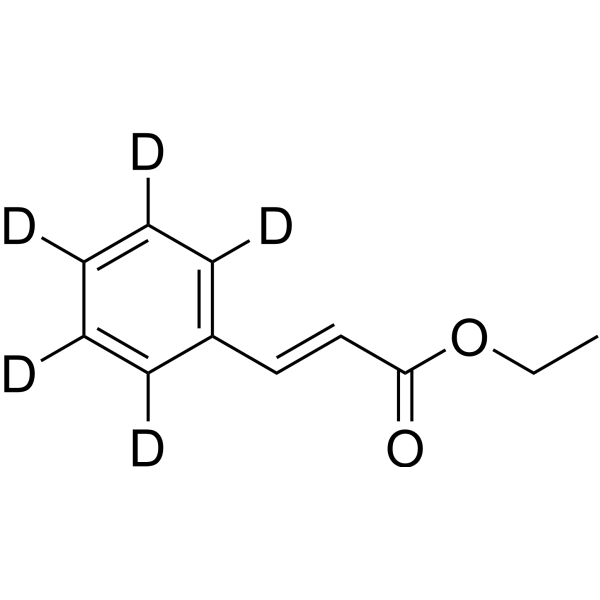
-
- HY-W011053R
-
|
|
Others
|
Others
|
|
Neotame (Standard) is the analytical standard of Neotame. This product is intended for research and analytical applications. Neotame is a derivative of Aspartame and is a low-caloric and high-intensity artificial sweetener that is 7000-13,000 times sweeter than sugar. Neotame is a non-nutritive sweetener and flavor enhancer that can be used in a variety of foods .
|
-
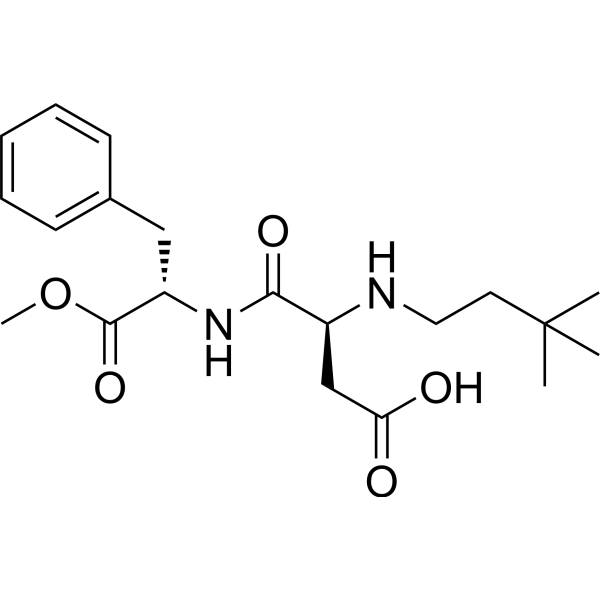
-
- HY-W015695R
-
|
|
Endogenous Metabolite
|
Infection
|
|
4-Methyl-5-thiazoleethanol (Standard) is the analytical standard of 4-Methyl-5-thiazoleethanol. This product is intended for research and analytical applications. 4-Methyl-5-thiazoleethanol, a natural sulfur-containing flavor compound, is a thiazole precursor .
|
-
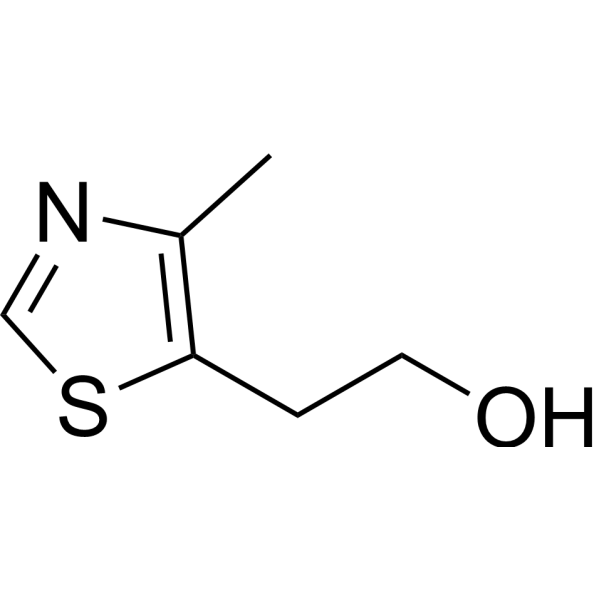
-
- HY-W013466
-
|
Sebacic acid dimethyl ester
|
Biochemical Assay Reagents
|
Others
|
|
Dimethyl decanedioate belongs to the class of diesters and consists of a sebacic acid backbone (also known as sebacic acid) esterified with two methyl groups. This compound has a fruity smell and is commonly used as a flavor and fragrance ingredient in a variety of products, including perfumes, soaps and cosmetics. It can also be used as a plasticizer in the production of polymers and as a neutralizer in the synthesis of certain drugs.
|
-
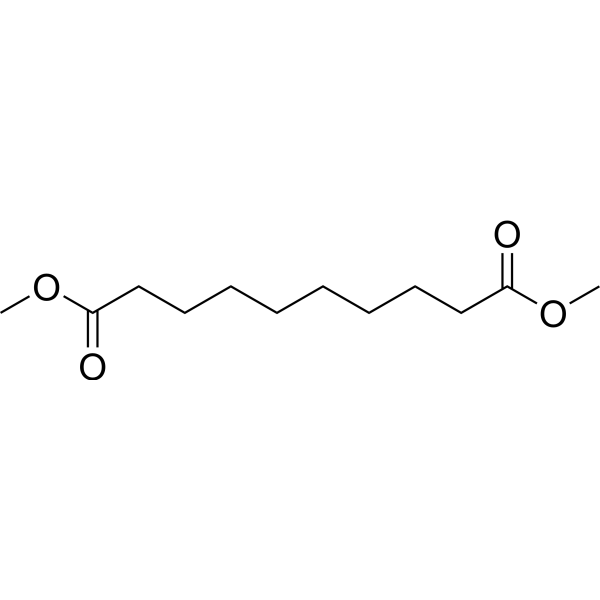
-
- HY-W067056S
-
|
Methyl(E)-3-phenylpropenoate-d5
|
Isotope-Labeled Compounds
|
Inflammation/Immunology
|
|
Methyl (E)-cinnamate-d5 is the deuterium labeled Methyl (E)-cinnamate[1]. Methyl (E)-cinnamate (EMC), a phytochemical constituent isolated from Alpinia katsumadai Hayata, is a natural flavor compound with anti-inflammatory properties. Methyl (E)-cinnamate is widely used in the food and commodity industry[2].
|
-
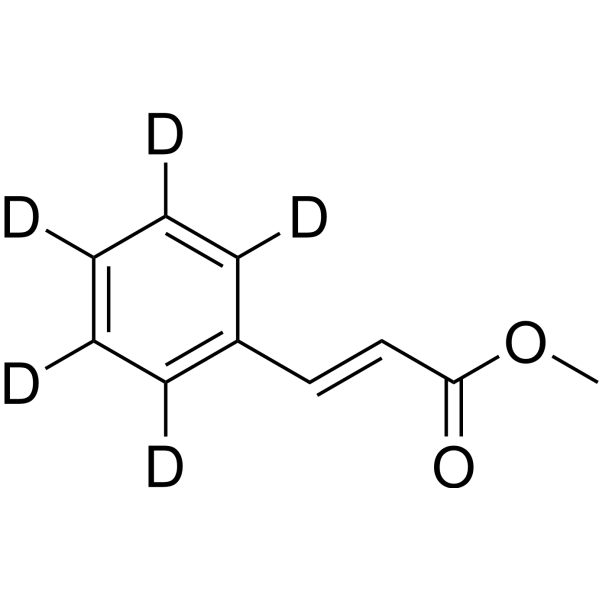
-
- HY-W067056S1
-
|
Methyl(E)-3-phenylpropenoate-d7
|
Isotope-Labeled Compounds
|
Inflammation/Immunology
|
|
Methyl(E)-cinnamate-d7 is the deuterium labeled Methyl (E)-cinnamate[1]. Methyl (E)-cinnamate (EMC), a phytochemical constituent isolated from Alpinia katsumadai Hayata, is a natural flavor compound with anti-inflammatory properties. Methyl (E)-cinnamate is widely used in the food and commodity industry[2].
|
-
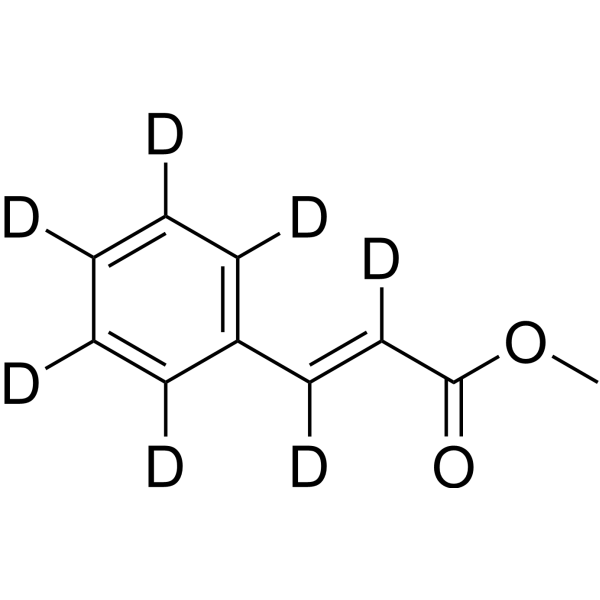
-
- HY-N0367
-
|
(E)-Anethole
|
Endogenous Metabolite
|
Endocrinology
Cancer
|
|
Trans-Anethole ((E)-Anethole), a phenylpropene derivative isolated from Foeniculum vulgare, shows estrogenic activity at lower concentrations and cytotoxic at higher concentrations in cancer cell lines . Trans-Anethole ((E)-Anethole) contributes a large component of the odor and flavor of anise and fennel, anise myrtle, liquorice, camphor, magnolia blossoms, and star anise .
|
-
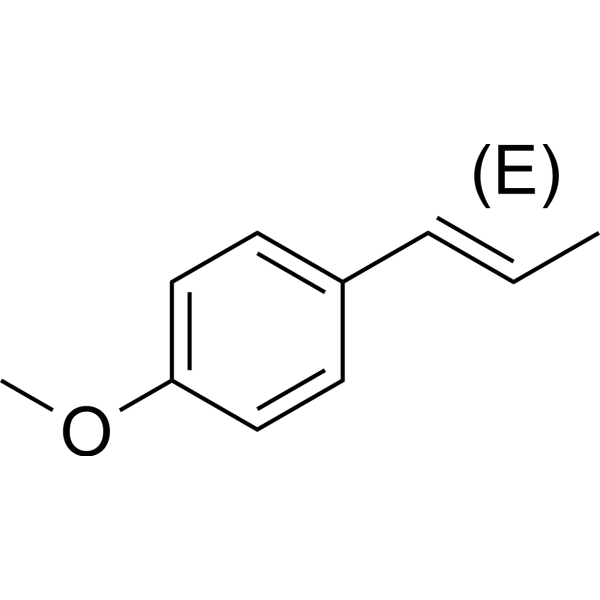
-
- HY-W012998
-
|
|
Others
|
Others
|
|
2,3-Pentanedione is a common constituent of synthetic flavorings and is used to impart a butter, strawberry, caramel, fruit, rum, or cheese flavor in beverages, ice cream, candy, baked goods, gelatins, and puddings. 2,3-Pentanedione also occurs naturally as a fermentation product in beer, wine, and yogurt and is releasedduring roasting of coffee beans .
|
-

-
- HY-W087904
-
|
α-D-Lactose hydrate
|
Others
|
Others
|
|
α-Lactose (hydrate) (α-D-Lactose (hydrate)) is the principal carbohydrate in the milk of most mammals. α-Lactose (hydrate) consists of glucose and galactose and exists in the form of two anomers, α and β. α-Lactose (hydrate) has many uses in the food and pharmaceutical industries, such as a free-flowing or agglomerating agent, a diluent for pigments, flavors, or enzymes .
|
-
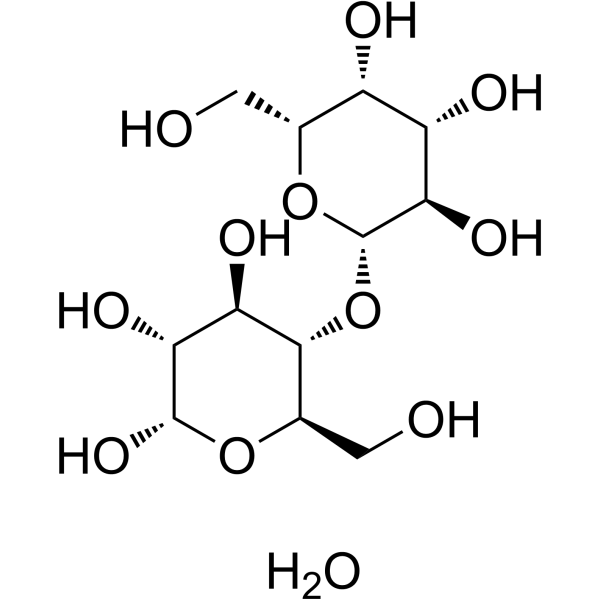
-
- HY-N6636R
-
|
|
NF-κB
|
Inflammation/Immunology
|
|
Valencene (Standard) is the analytical standard of Valencene. This product is intended for research and analytical applications. Valencene is a sesquiterpene isolated from Cyperus rotundus, possesses antiallergic, antimelanogenesis, anti-infammatory, and antioxidant activitivies. Valencene inhibits the exaggerated expression of Th2 chemokines and proinflammatory chemokines through blockade of the NF-κB pathway. Valencene is used to flavor foods and drinks .
|
-
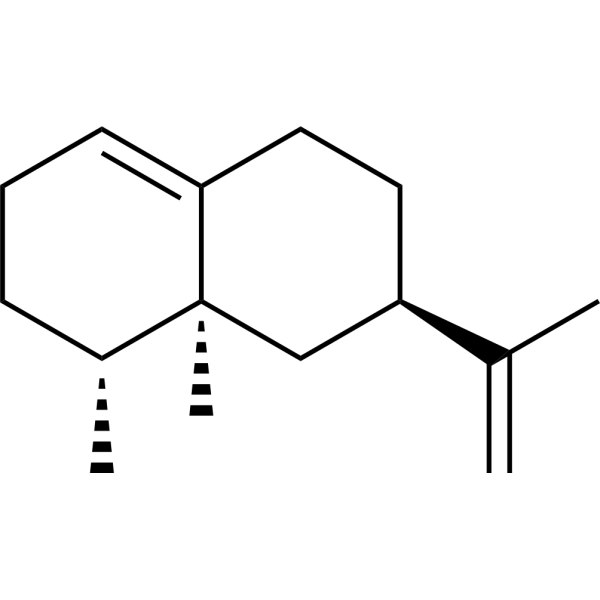
-
- HY-W007355
-
Skatole
3 Publications Verification
3-Methylindole; 3-Methyl-1H-indole
|
Aryl Hydrocarbon Receptor
p38 MAPK
Endogenous Metabolite
Apoptosis
|
Others
|
|
Skatole (3-methylindole) is a heterocyclic compound naturally found in the feces of vertebrates and can be found in certain plants. Skatole can be produced by intestinal bacteria, inducing apoptosis of intestinal epithelial cells through activating aryl hydrocarbon receptors (AhR) and p38. Skatole has been used in specific products of the perfume industry or as a flavor additive in ice cream .
|
-
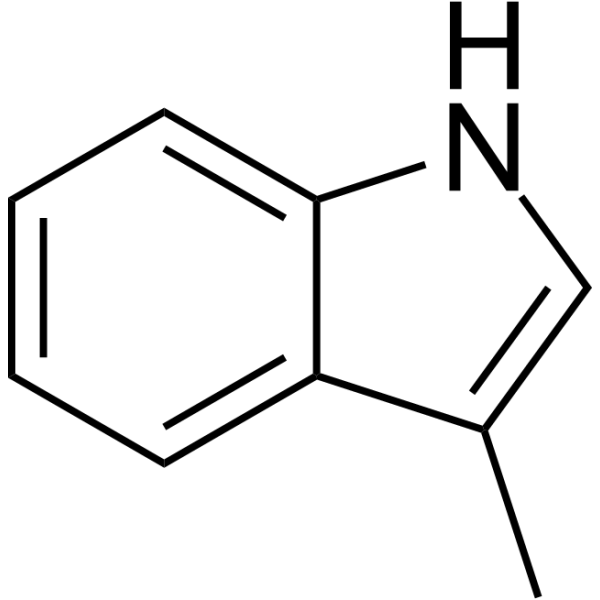
-
- HY-W236261
-
|
ATEE
|
Biochemical Assay Reagents
|
Others
|
|
N-Acetyl-L-tyrosine ethyl ester (ATEE) is a compound commonly used as a food flavoring and supplement. It is an ester of tyrosine, an amino acid found in many proteins. N-Acetyl-L-tyrosine ethyl ester is sweet, nutty and caramelized and is commonly used to enhance the flavor of baked goods, dairy products and beverages. Potential health benefits of N-Acetyl-L-tyrosine ethyl ester include its antioxidant properties and ability to improve cognitive function.
|
-
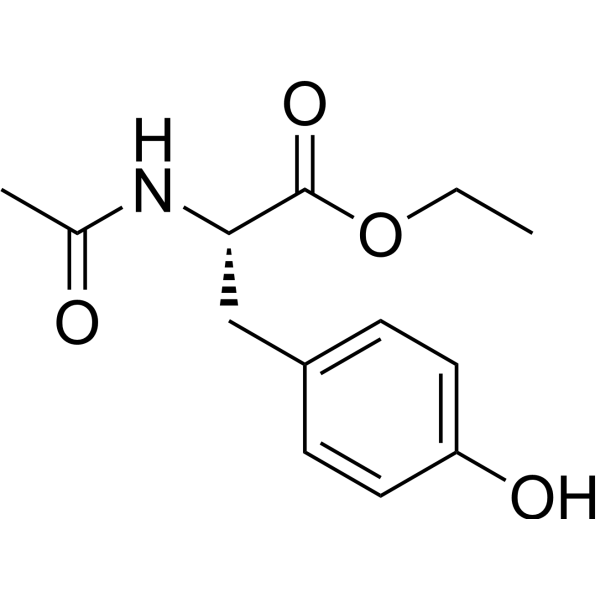
-
- HY-W250303
-
|
Hydroxybutanedioic acid disodium salt; E 296 disodium salt
|
Biochemical Assay Reagents
|
Others
|
|
Sodium DL-Malate is an organic compound commonly used as a food additive, buffer and nutritional supplement. It contains sodium and malic acid. Malic acid disodium salt has several properties suitable for these applications, including the ability to enhance food flavor, improve texture and regulate acidity. Additionally, it can be used as a dietary supplement due to its potential health benefits, including improved energy production, reduced fatigue, and enhanced athletic performance.
|
-
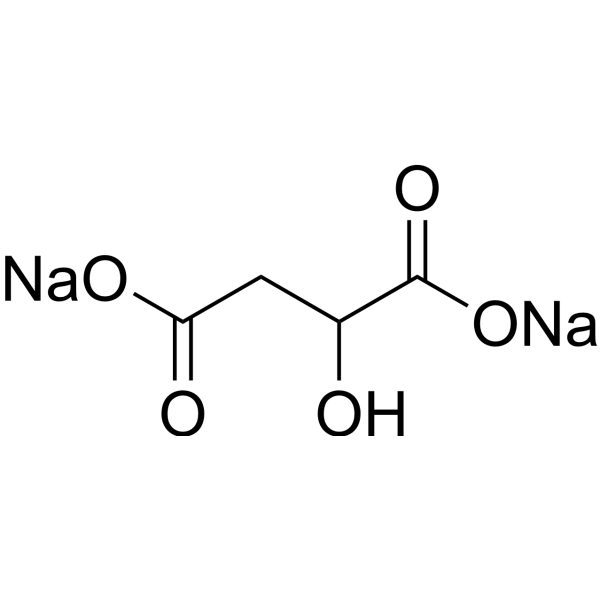
-
- HY-W099644
-
|
Ethyl erucate
|
Biochemical Assay Reagents
|
Others
|
|
Ethyl docos-13-enoate is a colorless or pale yellow liquid with a sweet floral aroma, used as a flavoring agent in the food industry and as a flavor enhancer in perfumes and colognes. It is also found in some vegetable oils and is used as a surfactant and emulsifier in personal care products. Ethyl docos-13-enoate is a versatile compound used in various industries due to its pleasant odor and ability to mix ingredients together.
|
-

-
- HY-W111375
-
|
|
Biochemical Assay Reagents
|
Others
|
|
(E)-Pent-2-enal has a pungent fruity odor. This compound is commonly used in the flavor and fragrance industry because of its strong aroma, often described as fresh and green. Furthermore, (E)-Pent-2-enal can be used as an intermediate in the synthesis of various organic compounds, including pharmaceuticals and agrochemicals. Its unique chemical properties make it an important ingredient in many commercial products, including perfumes, air fresheners and cleaners.
|
-
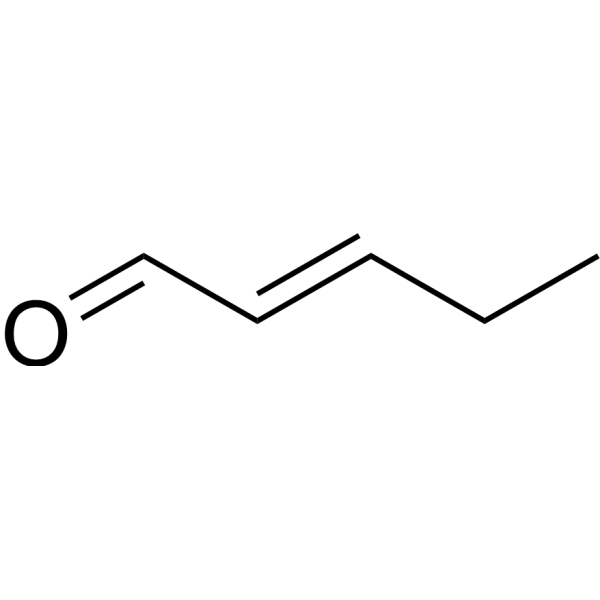
-
- HY-W012998S
-
|
|
Isotope-Labeled Compounds
|
Others
|
|
2,3-Pentanedione-d5 is the deuterium labeled 2,3-Pentanedione[1]. 2,3-Pentanedione is a common constituent of synthetic flavorings and is used to impart a butter, strawberry, caramel, fruit, rum, or cheese flavor in beverages, ice cream, candy, baked goods, gelatins, and puddings. 2,3-Pentanedione also occurs naturally as a fermentation product in beer, wine, and yogurt and is releasedduring roasting of coffee beans[2].
|
-
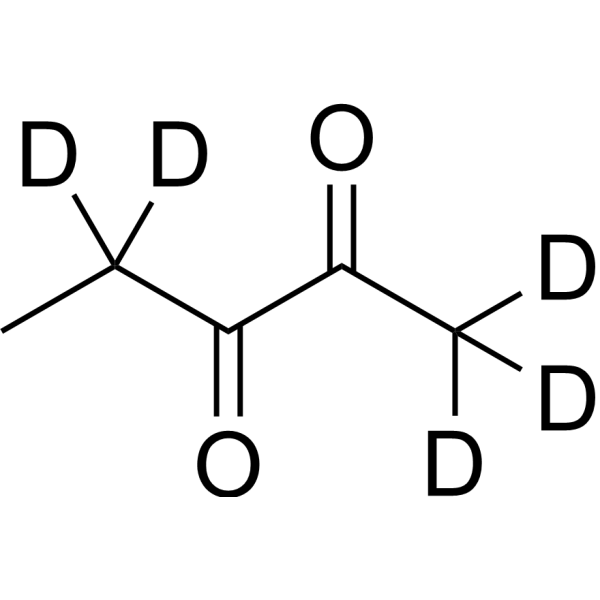
-
- HY-N0215
-
|
Phenylalanine
|
Calcium Channel
iGluR
Endogenous Metabolite
|
Metabolic Disease
|
|
L-Phenylalanine ((S)-2-Amino-3-phenylpropionic acid) is an essential amino acid isolated from Escherichia coli. L-Phenylalanine is a α2δ subunit of voltage-dependent Ca + channels antagonist with a Ki of 980 nM. L-phenylalanine is a competitive antagonist for the glycine- and glutamate-binding sites of N-methyl-D-aspartate receptors (NMDARs) (KB of 573 μM ) and non-NMDARs, respectively. L-Phenylalanine is widely used in the production of food flavors and pharmaceuticals .
|
-

-
- HY-W010607
-
|
(Z)-3-Hexen-1-ol
|
Others
|
Neurological Disease
|
|
cis-3-Hexen-1-ol ((Z)-3-Hexen-1-ol) is a green grassy smelling compound found in many fresh fruits and vegetables. cis-3-Hexen-1-ol is widely used as an added flavor in processed food to provide a fresh green quality. cis-3-Hexen-1-ol is an attractant to various insects .
|
-
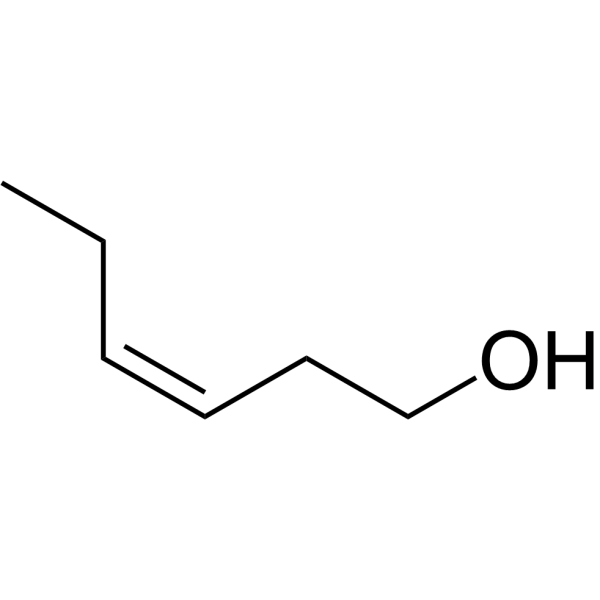
-
- HY-N0215S6
-
|
2-Amino-3-phenylpropionic acid-d5 hydrochloride
|
Isotope-Labeled Compounds
Calcium Channel
iGluR
Endogenous Metabolite
|
Metabolic Disease
|
|
DL-Phenylalanine-d5 (hydrochloride) is the deuterium labeled DL-Phenylalanine hydrochloride. L-Phenylalanine hydrochloride is an essential amino acid isolated from Escherichia coli. L-Phenylalanine hydrochloride is a α2δ subunit of voltage-dependent Ca+ channels antagonist with a Ki of 980 nM. L-phenylalanine hydrochloride is a competitive antagonist for the glycine- and glutamate-binding sites of N-methyl-D-aspartate receptors (NMDARs) (KB of 573 μM ) and non-NMDARs, respectively. L-Phenylalanine hydrochloride is widely used in the production of food flavors and pharmaceuticals[1][2][3][4].
|
-

-
- HY-W010639
-
|
Pent-4-en-1-ol
|
Biochemical Assay Reagents
|
Others
|
|
4-Penten-1-ol is commonly used as a flavor ingredient in various products, including food, beverages, and perfumes, and can also be used as a starting material for the synthesis of various organic compounds, including pharmaceuticals and agrochemicals. In addition, 4-Penten -1-ol has been investigated for its potential use as a biobased solvent due to its low toxicity and biodegradability, and its antimicrobial properties against certain bacteria and fungi, which may make it useful for developing new Antibacterial agents.
|
-
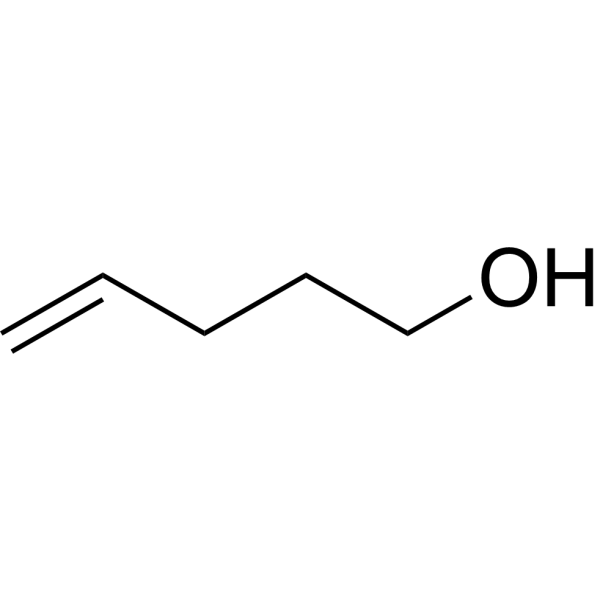
-
- HY-N0215S13
-
|
(S)-2-Amino-3-phenylpropionic acid-d1
|
Isotope-Labeled Compounds
Calcium Channel
iGluR
Endogenous Metabolite
|
Metabolic Disease
|
|
L-Phenylalanine-d is the deuterium labeled L-Phenylalanine. L-Phenylalanine ((S)-2-Amino-3-phenylpropionic acid) is an essential amino acid isolated from Escherichia coli. L-Phenylalanine is a α2δ subunit of voltage-dependent Ca+ channels antagonist with a Ki of 980 nM. L-phenylalanine is a competitive antagonist for the glycine- and glutamate-binding sites of N-methyl-D-aspartate receptors (NMDARs) (KB of 573 μM ) and non-NMDARs, respectively. L-Phenylalanine is widely used in the production of food flavors and pharmaceuticals[1][2][3][4].
|
-

-
- HY-W010176
-
|
3,7-Dimethyloctan-1-ol
|
Biochemical Assay Reagents
|
Others
|
|
3,7-Dimethyloctan-1-ol, 3,7-Dimethyloctan-1-ol is commonly used as a flavor and fragrance ingredient due to its pleasant aroma, it can also be used as a solvent, and in the synthesis of various organic compounds (including pharmaceuticals and agrochemicals), in addition, due to its high energy content and low volatility, 3,7-Dimethyloctan-1-ol has been investigated for its potential use as a biofuel, due to its toxicity to some pests, it has also been studied as a potential repellent and insecticide,
|
-
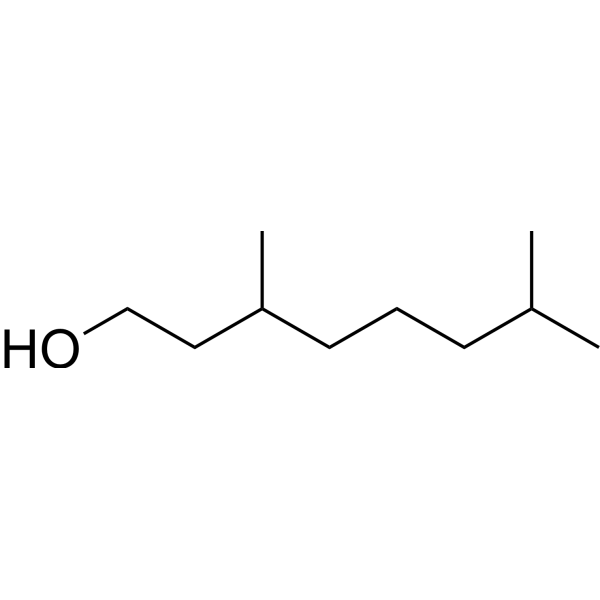
-
- HY-N0215S3
-
|
(S)-2-Amino-3-phenylpropionic acid-d2
|
Calcium Channel
iGluR
Endogenous Metabolite
|
Metabolic Disease
|
|
L-Phenylalanine-d2 is the deuterium labeled L-Phenylalanine. L-Phenylalanine ((S)-2-Amino-3-phenylpropionic acid) is an essential amino acid isolated from Escherichia coli. L-Phenylalanine is a α2δ subunit of voltage-dependent Ca+ channels antagonist with a Ki of 980 nM. L-phenylalanine is a competitive antagonist for the glycine- and glutamate-binding sites of N-methyl-D-aspartate receptors (NMDARs) (KB of 573 μM ) and non-NMDARs, respectively. L-Phenylalanine is widely used in the production of food flavors and pharmaceuticals[1][2][3][4].
|
-

- HY-N0215S2
-
|
(S)-2-Amino-3-phenylpropionic acid-13C
|
Isotope-Labeled Compounds
Calcium Channel
iGluR
Endogenous Metabolite
|
Metabolic Disease
|
|
L-Phenylalanine- 13C is the 13C-labeled L-Phenylalanine. L-Phenylalanine ((S)-2-Amino-3-phenylpropionic acid) is an essential amino acid isolated from Escherichia coli. L-Phenylalanine is a α2δ subunit of voltage-dependent Ca+ channels antagonist with a Ki of 980 nM. L-phenylalanine is a competitive antagonist for the glycine- and glutamate-binding sites of N-methyl-D-aspartate receptors (NMDARs) (KB of 573 μM ) and non-NMDARs, respectively. L-Phenylalanine is widely used in the production of food flavors and pharmaceuticals[1][2][3][4].
|
-

- HY-N0215S
-
|
(S)-2-Amino-3-phenylpropionic acid-d7
|
Isotope-Labeled Compounds
Calcium Channel
iGluR
Endogenous Metabolite
|
Metabolic Disease
|
|
L-Phenylalanine-d7 is the deuterium labeled L-Phenylalanine. L-Phenylalanine ((S)-2-Amino-3-phenylpropionic acid) is an essential amino acid isolated from Escherichia coli. L-Phenylalanine is a α2δ subunit of voltage-dependent Ca+ channels antagonist with a Ki of 980 nM. L-phenylalanine is a competitive antagonist for the glycine- and glutamate-binding sites of N-methyl-D-aspartate receptors (NMDARs) (KB of 573 μM ) and non-NMDARs, respectively. L-Phenylalanine is widely used in the production of food flavors and pharmaceuticals[1][2][3][4].
|
-

- HY-N0215S1
-
|
(S)-2-Amino-3-phenylpropionic acid-d8
|
Calcium Channel
iGluR
Endogenous Metabolite
|
Metabolic Disease
|
|
L-Phenylalanine-d8 is the deuterium labeled L-Phenylalanine. L-Phenylalanine ((S)-2-Amino-3-phenylpropionic acid) is an essential amino acid isolated from Escherichia coli. L-Phenylalanine is a α2δ subunit of voltage-dependent Ca+ channels antagonist with a Ki of 980 nM. L-phenylalanine is a competitive antagonist for the glycine- and glutamate-binding sites of N-methyl-D-aspartate receptors (NMDARs) (KB of 573 μM ) and non-NMDARs, respectively. L-Phenylalanine is widely used in the production of food flavors and pharmaceuticals[1][2][3][4].
|
-

- HY-N0215S5
-
|
(S)-2-Amino-3-phenylpropionic acid-15N
|
Isotope-Labeled Compounds
Calcium Channel
iGluR
Endogenous Metabolite
|
Metabolic Disease
|
|
L-Phenylalanine- 15N is the 15N-labeled L-Phenylalanine. L-Phenylalanine ((S)-2-Amino-3-phenylpropionic acid) is an essential amino acid isolated from Escherichia coli. L-Phenylalanine is a α2δ subunit of voltage-dependent Ca+ channels antagonist with a Ki of 980 nM. L-phenylalanine is a competitive antagonist for the glycine- and glutamate-binding sites of N-methyl-D-aspartate receptors (NMDARs) (KB of 573 μM ) and non-NMDARs, respectively. L-Phenylalanine is widely used in the production of food flavors and pharmaceuticals[1][2][3][4].
|
-

- HY-N0215S10
-
|
(S)-2-Amino-3-phenylpropionic acid-13C9
|
Isotope-Labeled Compounds
Calcium Channel
iGluR
Endogenous Metabolite
|
Metabolic Disease
|
|
L-Phenylalanine- 13C9 is the 13C-labeled L-Phenylalanine. L-Phenylalanine ((S)-2-Amino-3-phenylpropionic acid) is an essential amino acid isolated from Escherichia coli. L-Phenylalanine is a α2δ subunit of voltage-dependent Ca+ channels antagonist with a Ki of 980 nM. L-phenylalanine is a competitive antagonist for the glycine- and glutamate-binding sites of N-methyl-D-aspartate receptors (NMDARs) (KB of 573 μM ) and non-NMDARs, respectively. L-Phenylalanine is widely used in the production of food flavors and pharmaceuticals[1][2][3][4].
|
-

- HY-N0215S12
-
|
|
Calcium Channel
iGluR
Endogenous Metabolite
|
Metabolic Disease
|
|
L-Phenylalanine-d5 is the deuterium labeled L-Phenylalanine. L-Phenylalanine ((S)-2-Amino-3-phenylpropionic acid) is an essential amino acid isolated from Escherichia coli. L-Phenylalanine is a α2δ subunit of voltage-dependent Ca+ channels antagonist with a Ki of 980 nM. L-phenylalanine is a competitive antagonist for the glycine- and glutamate-binding sites of N-methyl-D-aspartate receptors (NMDARs) (KB of 573 μM ) and non-NMDARs, respectively. L-Phenylalanine is widely used in the production of food flavors and pharmaceuticals[1][2][3][4].
|
-

- HY-N0215S7
-
|
(S)-2-Amino-3-phenylpropionic acid-3-13C
|
Calcium Channel
iGluR
Endogenous Metabolite
|
Metabolic Disease
|
|
L-Phenylalanine-3- 13C is the 13C-labeled L-Phenylalanine. L-Phenylalanine ((S)-2-Amino-3-phenylpropionic acid) is an essential amino acid isolated from Escherichia coli. L-Phenylalanine is a α2δ subunit of voltage-dependent Ca+ channels antagonist with a Ki of 980 nM. L-phenylalanine is a competitive antagonist for the glycine- and glutamate-binding sites of N-methyl-D-aspartate receptors (NMDARs) (KB of 573 μM ) and non-NMDARs, respectively. L-Phenylalanine is widely used in the production of food flavors and pharmaceuticals[1][2][3][4].
|
-

- HY-N0215S8
-
|
(S)-2-Amino-3-phenylpropionic acid-13C6
|
Isotope-Labeled Compounds
Calcium Channel
iGluR
Endogenous Metabolite
|
Metabolic Disease
|
|
L-Phenylalanine- 13C6 is the 13C-labeled L-Phenylalanine. L-Phenylalanine ((S)-2-Amino-3-phenylpropionic acid) is an essential amino acid isolated from Escherichia coli. L-Phenylalanine is a α2δ subunit of voltage-dependent Ca+ channels antagonist with a Ki of 980 nM. L-phenylalanine is a competitive antagonist for the glycine- and glutamate-binding sites of N-methyl-D-aspartate receptors (NMDARs) (KB of 573 μM ) and non-NMDARs, respectively. L-Phenylalanine is widely used in the production of food flavors and pharmaceuticals[1][2][3][4].
|
-

- HY-117215
-
|
|
Biochemical Assay Reagents
|
Others
|
|
Beta-Ocimene is a naturally occurring organic compound that belongs to the terpene family. It exists as a mixture of three isomers: cis β-Ocimene, trans β-Ocimene and myrcene-like β-Ocimene. It has a pleasant, sweet herbaceous scent and is found in many plants, including mint, basil, parsley, and kumquat. β-Ocimene is widely used in the flavor and fragrance industry due to its characteristic aroma and taste. It also has potential applications in agriculture as natural insect repellants and pheromones that attract beneficial insects. β-Ocimene has potential anti-inflammatory and anticancer activities.
|
-
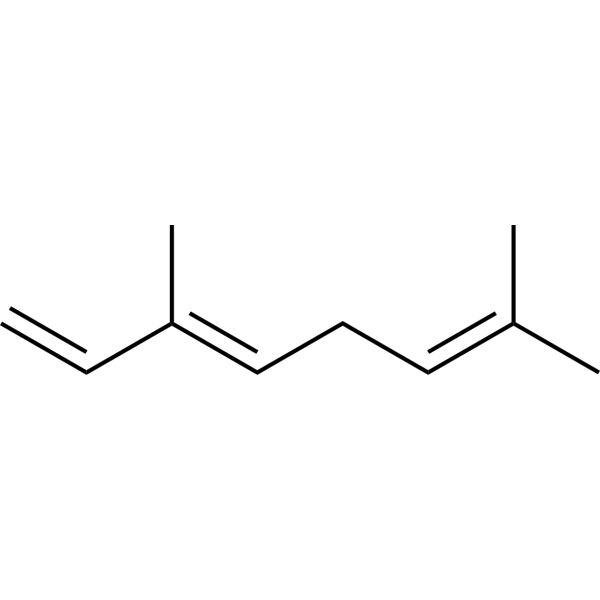
- HY-N0215S11
-
|
(S)-2-Amino-3-phenylpropionic acid-13C9,15N
|
Calcium Channel
iGluR
Endogenous Metabolite
|
Metabolic Disease
|
|
L-Phenylalanine- 13C9, 15N is the 13C- and 15N-labeled L-Phenylalanine. L-Phenylalanine ((S)-2-Amino-3-phenylpropionic acid) is an essential amino acid isolated from Escherichia coli. L-Phenylalanine is a α2δ subunit of voltage-dependent Ca+ channels antagonist with a Ki of 980 nM. L-phenylalanine is a competitive antagonist for the glycine- and glutamate-binding sites of N-methyl-D-aspartate receptors (NMDARs) (KB of 573 μM ) and non-NMDARs, respectively. L-Phenylalanine is widely used in the production of food flavors and pharmaceuticals[1][2][3][4].
|
-

- HY-N0215S14
-
|
(S)-2-Amino-3-phenylpropionic acid-15N,d8
|
Isotope-Labeled Compounds
Calcium Channel
iGluR
Endogenous Metabolite
|
Metabolic Disease
|
|
L-Phenylalanine- 15N,d8 is the deuterium and 15N-labeled L-Phenylalanine. L-Phenylalanine ((S)-2-Amino-3-phenylpropionic acid) is an essential amino acid isolated from Escherichia coli. L-Phenylalanine is a α2δ subunit of voltage-dependent Ca2+ channels antagonist with a Ki of 980 nM. L-phenylalanine is a competitive antagonist for the glycine- and glutamate-binding sites of N-methyl-D-aspartate receptors (NMDARs) (KB of 573 μM ) and non-NMDARs, respectively. L-Phenylalanine is widely used in the production of food flavors and pharmaceuticals[1][2][3][4].
|
-

- HY-N0215S9
-
|
(S)-2-Amino-3-phenylpropionic acid-13C9,15N,d8
|
Isotope-Labeled Compounds
Calcium Channel
iGluR
Endogenous Metabolite
|
Metabolic Disease
|
|
L-Phenylalanine- 13C9, 15N,d8 is the deuterium, 13C-, and 15-labeled L-Phenylalanine. L-Phenylalanine ((S)-2-Amino-3-phenylpropionic acid) is an essential amino acid isolated from Escherichia coli. L-Phenylalanine is a α2δ subunit of voltage-dependent Ca+ channels antagonist with a Ki of 980 nM. L-phenylalanine is a competitive antagonist for the glycine- and glutamate-binding sites of N-methyl-D-aspartate receptors (NMDARs) (KB of 573 μM ) and non-NMDARs, respectively. L-Phenylalanine is widely used in the production of food flavors and pharmaceuticals[1][2][3][4].
|
-

| Cat. No. |
Product Name |
Type |
-
- HY-W014884
-
|
Decanoic Acid Ethyl Ester
|
Biochemical Assay Reagents
|
|
Ethyl decanoate is an organic compound commonly used as a flavoring and food additive. It can be used to prepare flavors and food seasonings with various flavors, and is widely used in food, flavors and cosmetics. In addition, this compound is also used as a substrate or intermediate in some biochemical reactions.
|
-
- HY-W009443
-
|
Diethyl sebacate
|
Biochemical Assay Reagents
|
|
Diethyl decanedioate is an organic compound commonly used as a raw material for flavors and food additives. It can be used to make fruit and mint flavors, and is widely used in some food processing and cosmetic production. In addition, this compound is also used as a reagent and intermediate in some organic synthesis reactions.
|
-
- HY-W016278
-
|
|
Biochemical Assay Reagents
|
|
Gamma-undecalactone consists of a five-membered dihydrofuran ring with an ester group and a heptyl chain. This compound has a fruity smell and is commonly used as a flavor additive in various food and beverage products such as coffee, tea and baked goods.
|
-
- HY-W022036
-
|
Guaethol; Guethol; NSC 180
|
Biochemical Assay Reagents
|
|
2-Ethoxyphenol, also known as guaiacol ethyl ether, consists of a phenolic ring and an ethoxy group connected to the 2-position. The compound has a sweet, smoky flavor and is commonly used as a flavoring in foods such as baked goods, candy and beverages.
|
-
- HY-W009684
-
|
Ethyl dodecanoate
|
Biochemical Assay Reagents
|
|
Ethyl Laurate is an organic compound commonly used as a flavoring and food additive. It can be used to make fruit, mint and sweet flavors, and is widely used in some food processing and cosmetic production. In addition, this compound is also used as a reagent and intermediate in some organic synthesis reactions.
|
-
- HY-W012995
-
|
|
Biochemical Assay Reagents
|
|
5-Hexen-1-ol, is an aromatic substance with aromas similar to substances such as herbs, tea and citrus. Therefore, it is usually used in the food, fragrance and perfume industries, and is widely used in the preparation of various food flavors, fragrances, taste flavoring agents, essential oils and cosmetics and other products.
|
-
- HY-W013466
-
|
Sebacic acid dimethyl ester
|
Biochemical Assay Reagents
|
|
Dimethyl decanedioate belongs to the class of diesters and consists of a sebacic acid backbone (also known as sebacic acid) esterified with two methyl groups. This compound has a fruity smell and is commonly used as a flavor and fragrance ingredient in a variety of products, including perfumes, soaps and cosmetics. It can also be used as a plasticizer in the production of polymers and as a neutralizer in the synthesis of certain drugs.
|
-
- HY-W236261
-
|
ATEE
|
Biochemical Assay Reagents
|
|
N-Acetyl-L-tyrosine ethyl ester (ATEE) is a compound commonly used as a food flavoring and supplement. It is an ester of tyrosine, an amino acid found in many proteins. N-Acetyl-L-tyrosine ethyl ester is sweet, nutty and caramelized and is commonly used to enhance the flavor of baked goods, dairy products and beverages. Potential health benefits of N-Acetyl-L-tyrosine ethyl ester include its antioxidant properties and ability to improve cognitive function.
|
-
- HY-W250303
-
|
Hydroxybutanedioic acid disodium salt; E 296 disodium salt
|
Biochemical Assay Reagents
|
|
Sodium DL-Malate is an organic compound commonly used as a food additive, buffer and nutritional supplement. It contains sodium and malic acid. Malic acid disodium salt has several properties suitable for these applications, including the ability to enhance food flavor, improve texture and regulate acidity. Additionally, it can be used as a dietary supplement due to its potential health benefits, including improved energy production, reduced fatigue, and enhanced athletic performance.
|
-
- HY-W099644
-
|
Ethyl erucate
|
Biochemical Assay Reagents
|
|
Ethyl docos-13-enoate is a colorless or pale yellow liquid with a sweet floral aroma, used as a flavoring agent in the food industry and as a flavor enhancer in perfumes and colognes. It is also found in some vegetable oils and is used as a surfactant and emulsifier in personal care products. Ethyl docos-13-enoate is a versatile compound used in various industries due to its pleasant odor and ability to mix ingredients together.
|
-
- HY-W111375
-
|
|
Biochemical Assay Reagents
|
|
(E)-Pent-2-enal has a pungent fruity odor. This compound is commonly used in the flavor and fragrance industry because of its strong aroma, often described as fresh and green. Furthermore, (E)-Pent-2-enal can be used as an intermediate in the synthesis of various organic compounds, including pharmaceuticals and agrochemicals. Its unique chemical properties make it an important ingredient in many commercial products, including perfumes, air fresheners and cleaners.
|
-
- HY-W010639
-
|
Pent-4-en-1-ol
|
Biochemical Assay Reagents
|
|
4-Penten-1-ol is commonly used as a flavor ingredient in various products, including food, beverages, and perfumes, and can also be used as a starting material for the synthesis of various organic compounds, including pharmaceuticals and agrochemicals. In addition, 4-Penten -1-ol has been investigated for its potential use as a biobased solvent due to its low toxicity and biodegradability, and its antimicrobial properties against certain bacteria and fungi, which may make it useful for developing new Antibacterial agents.
|
-
- HY-W010176
-
|
3,7-Dimethyloctan-1-ol
|
Biochemical Assay Reagents
|
|
3,7-Dimethyloctan-1-ol, 3,7-Dimethyloctan-1-ol is commonly used as a flavor and fragrance ingredient due to its pleasant aroma, it can also be used as a solvent, and in the synthesis of various organic compounds (including pharmaceuticals and agrochemicals), in addition, due to its high energy content and low volatility, 3,7-Dimethyloctan-1-ol has been investigated for its potential use as a biofuel, due to its toxicity to some pests, it has also been studied as a potential repellent and insecticide,
|
-
- HY-117215
-
|
|
Biochemical Assay Reagents
|
|
Beta-Ocimene is a naturally occurring organic compound that belongs to the terpene family. It exists as a mixture of three isomers: cis β-Ocimene, trans β-Ocimene and myrcene-like β-Ocimene. It has a pleasant, sweet herbaceous scent and is found in many plants, including mint, basil, parsley, and kumquat. β-Ocimene is widely used in the flavor and fragrance industry due to its characteristic aroma and taste. It also has potential applications in agriculture as natural insect repellants and pheromones that attract beneficial insects. β-Ocimene has potential anti-inflammatory and anticancer activities.
|
| Cat. No. |
Product Name |
Target |
Research Area |
-
- HY-P2081
-
|
|
Peptides
|
Others
|
|
Delicious peptide is a small linear octapeptide with delicious taste, can be isolated from the gravy of beef meat. Delicious peptide has savory flavor, is also described as beefy meaty peptide and a beef flavor enhancer .
|
| Cat. No. |
Product Name |
Category |
Target |
Chemical Structure |
-
- HY-N9452
-
-

-
- HY-W017212
-
-

-
- HY-W010516
-
-

-
- HY-N7125
-
-

-
- HY-W067056
-
-

-
- HY-W015695
-
-

-
- HY-W015580
-
-

-
- HY-N0756
-
-

-
- HY-50730
-
-

-
- HY-111825A
-
-

-
- HY-W012788
-
-

-
- HY-Y0121
-
-

-
- HY-N7105
-
-

-
- HY-148937
-
-

-
- HY-W014394
-
-

-
- HY-N6636
-
-

-
- HY-W015695R
-
-

-
- HY-N0367
-
-

-
- HY-W012998
-
|
|
other families
Microorganisms
Classification of Application Fields
Ketones, Aldehydes, Acids
Source classification
Other Diseases
Plants
Disease Research Fields
|
Others
|
|
2,3-Pentanedione is a common constituent of synthetic flavorings and is used to impart a butter, strawberry, caramel, fruit, rum, or cheese flavor in beverages, ice cream, candy, baked goods, gelatins, and puddings. 2,3-Pentanedione also occurs naturally as a fermentation product in beer, wine, and yogurt and is releasedduring roasting of coffee beans .
|
-

-
- HY-W087904
-
|
α-D-Lactose hydrate
|
Structural Classification
Polysaccharides
Animals
Source classification
Saccharides
|
Others
|
|
α-Lactose (hydrate) (α-D-Lactose (hydrate)) is the principal carbohydrate in the milk of most mammals. α-Lactose (hydrate) consists of glucose and galactose and exists in the form of two anomers, α and β. α-Lactose (hydrate) has many uses in the food and pharmaceutical industries, such as a free-flowing or agglomerating agent, a diluent for pigments, flavors, or enzymes .
|
-

-
- HY-N6636R
-
-

-
- HY-W007355
-
-

-
- HY-N0215
-
-

-
- HY-W010607
-
-

| Cat. No. |
Product Name |
Chemical Structure |
-
- HY-W012788S
-
|
|
|
Maltol-d3 is a deuterium labeled Maltol (HY-W012788). Maltol, a type of aromatic compound, exists in high concentrations in red ginseng. Maltol is a potent antioxidative agent and typically is used to enhance flavor and preserve food .
|
-

-
- HY-W011053S
-
|
|
|
(R)-Neotame-d3 is the deuterium labeled Neotame. Neotame is a derivative of Aspartame and is a low-caloric and high-intensity artificial sweetener that is 7000-13,000 times sweeter than sugar. Neotame is a non-nutritive sweetener and flavor enhancer that can be used in a variety of foods[1][2].
|
-

-
- HY-Y0121S
-
|
|
|
Ethyl cinnamate-d5 is the deuterium labeled Ethyl cinnamate[1]. Ethyl cinnamate is a fragrance ingredient used in many fragrance compounds. Ethyl cinnamate is a food flavor and additive for cosmetic products. Ethyl cinnamate is also an excellent clearing reagent for mammalian tissues[2][3].
|
-

-
- HY-W067056S
-
|
|
|
Methyl (E)-cinnamate-d5 is the deuterium labeled Methyl (E)-cinnamate[1]. Methyl (E)-cinnamate (EMC), a phytochemical constituent isolated from Alpinia katsumadai Hayata, is a natural flavor compound with anti-inflammatory properties. Methyl (E)-cinnamate is widely used in the food and commodity industry[2].
|
-

-
- HY-W067056S1
-
|
|
|
Methyl(E)-cinnamate-d7 is the deuterium labeled Methyl (E)-cinnamate[1]. Methyl (E)-cinnamate (EMC), a phytochemical constituent isolated from Alpinia katsumadai Hayata, is a natural flavor compound with anti-inflammatory properties. Methyl (E)-cinnamate is widely used in the food and commodity industry[2].
|
-

-
- HY-W012998S
-
|
|
|
2,3-Pentanedione-d5 is the deuterium labeled 2,3-Pentanedione[1]. 2,3-Pentanedione is a common constituent of synthetic flavorings and is used to impart a butter, strawberry, caramel, fruit, rum, or cheese flavor in beverages, ice cream, candy, baked goods, gelatins, and puddings. 2,3-Pentanedione also occurs naturally as a fermentation product in beer, wine, and yogurt and is releasedduring roasting of coffee beans[2].
|
-

-
- HY-N0215S6
-
|
|
|
DL-Phenylalanine-d5 (hydrochloride) is the deuterium labeled DL-Phenylalanine hydrochloride. L-Phenylalanine hydrochloride is an essential amino acid isolated from Escherichia coli. L-Phenylalanine hydrochloride is a α2δ subunit of voltage-dependent Ca+ channels antagonist with a Ki of 980 nM. L-phenylalanine hydrochloride is a competitive antagonist for the glycine- and glutamate-binding sites of N-methyl-D-aspartate receptors (NMDARs) (KB of 573 μM ) and non-NMDARs, respectively. L-Phenylalanine hydrochloride is widely used in the production of food flavors and pharmaceuticals[1][2][3][4].
|
-

-
- HY-N0215S13
-
|
|
|
L-Phenylalanine-d is the deuterium labeled L-Phenylalanine. L-Phenylalanine ((S)-2-Amino-3-phenylpropionic acid) is an essential amino acid isolated from Escherichia coli. L-Phenylalanine is a α2δ subunit of voltage-dependent Ca+ channels antagonist with a Ki of 980 nM. L-phenylalanine is a competitive antagonist for the glycine- and glutamate-binding sites of N-methyl-D-aspartate receptors (NMDARs) (KB of 573 μM ) and non-NMDARs, respectively. L-Phenylalanine is widely used in the production of food flavors and pharmaceuticals[1][2][3][4].
|
-

-
- HY-N0215S3
-
|
|
|
L-Phenylalanine-d2 is the deuterium labeled L-Phenylalanine. L-Phenylalanine ((S)-2-Amino-3-phenylpropionic acid) is an essential amino acid isolated from Escherichia coli. L-Phenylalanine is a α2δ subunit of voltage-dependent Ca+ channels antagonist with a Ki of 980 nM. L-phenylalanine is a competitive antagonist for the glycine- and glutamate-binding sites of N-methyl-D-aspartate receptors (NMDARs) (KB of 573 μM ) and non-NMDARs, respectively. L-Phenylalanine is widely used in the production of food flavors and pharmaceuticals[1][2][3][4].
|
-

-
- HY-N0215S2
-
|
|
|
L-Phenylalanine- 13C is the 13C-labeled L-Phenylalanine. L-Phenylalanine ((S)-2-Amino-3-phenylpropionic acid) is an essential amino acid isolated from Escherichia coli. L-Phenylalanine is a α2δ subunit of voltage-dependent Ca+ channels antagonist with a Ki of 980 nM. L-phenylalanine is a competitive antagonist for the glycine- and glutamate-binding sites of N-methyl-D-aspartate receptors (NMDARs) (KB of 573 μM ) and non-NMDARs, respectively. L-Phenylalanine is widely used in the production of food flavors and pharmaceuticals[1][2][3][4].
|
-

-
- HY-N0215S
-
|
|
|
L-Phenylalanine-d7 is the deuterium labeled L-Phenylalanine. L-Phenylalanine ((S)-2-Amino-3-phenylpropionic acid) is an essential amino acid isolated from Escherichia coli. L-Phenylalanine is a α2δ subunit of voltage-dependent Ca+ channels antagonist with a Ki of 980 nM. L-phenylalanine is a competitive antagonist for the glycine- and glutamate-binding sites of N-methyl-D-aspartate receptors (NMDARs) (KB of 573 μM ) and non-NMDARs, respectively. L-Phenylalanine is widely used in the production of food flavors and pharmaceuticals[1][2][3][4].
|
-

-
- HY-N0215S1
-
|
|
|
L-Phenylalanine-d8 is the deuterium labeled L-Phenylalanine. L-Phenylalanine ((S)-2-Amino-3-phenylpropionic acid) is an essential amino acid isolated from Escherichia coli. L-Phenylalanine is a α2δ subunit of voltage-dependent Ca+ channels antagonist with a Ki of 980 nM. L-phenylalanine is a competitive antagonist for the glycine- and glutamate-binding sites of N-methyl-D-aspartate receptors (NMDARs) (KB of 573 μM ) and non-NMDARs, respectively. L-Phenylalanine is widely used in the production of food flavors and pharmaceuticals[1][2][3][4].
|
-

-
- HY-N0215S5
-
|
|
|
L-Phenylalanine- 15N is the 15N-labeled L-Phenylalanine. L-Phenylalanine ((S)-2-Amino-3-phenylpropionic acid) is an essential amino acid isolated from Escherichia coli. L-Phenylalanine is a α2δ subunit of voltage-dependent Ca+ channels antagonist with a Ki of 980 nM. L-phenylalanine is a competitive antagonist for the glycine- and glutamate-binding sites of N-methyl-D-aspartate receptors (NMDARs) (KB of 573 μM ) and non-NMDARs, respectively. L-Phenylalanine is widely used in the production of food flavors and pharmaceuticals[1][2][3][4].
|
-

-
- HY-N0215S10
-
|
|
|
L-Phenylalanine- 13C9 is the 13C-labeled L-Phenylalanine. L-Phenylalanine ((S)-2-Amino-3-phenylpropionic acid) is an essential amino acid isolated from Escherichia coli. L-Phenylalanine is a α2δ subunit of voltage-dependent Ca+ channels antagonist with a Ki of 980 nM. L-phenylalanine is a competitive antagonist for the glycine- and glutamate-binding sites of N-methyl-D-aspartate receptors (NMDARs) (KB of 573 μM ) and non-NMDARs, respectively. L-Phenylalanine is widely used in the production of food flavors and pharmaceuticals[1][2][3][4].
|
-

-
- HY-N0215S12
-
|
|
|
L-Phenylalanine-d5 is the deuterium labeled L-Phenylalanine. L-Phenylalanine ((S)-2-Amino-3-phenylpropionic acid) is an essential amino acid isolated from Escherichia coli. L-Phenylalanine is a α2δ subunit of voltage-dependent Ca+ channels antagonist with a Ki of 980 nM. L-phenylalanine is a competitive antagonist for the glycine- and glutamate-binding sites of N-methyl-D-aspartate receptors (NMDARs) (KB of 573 μM ) and non-NMDARs, respectively. L-Phenylalanine is widely used in the production of food flavors and pharmaceuticals[1][2][3][4].
|
-

-
- HY-N0215S7
-
|
|
|
L-Phenylalanine-3- 13C is the 13C-labeled L-Phenylalanine. L-Phenylalanine ((S)-2-Amino-3-phenylpropionic acid) is an essential amino acid isolated from Escherichia coli. L-Phenylalanine is a α2δ subunit of voltage-dependent Ca+ channels antagonist with a Ki of 980 nM. L-phenylalanine is a competitive antagonist for the glycine- and glutamate-binding sites of N-methyl-D-aspartate receptors (NMDARs) (KB of 573 μM ) and non-NMDARs, respectively. L-Phenylalanine is widely used in the production of food flavors and pharmaceuticals[1][2][3][4].
|
-

-
- HY-N0215S8
-
|
|
|
L-Phenylalanine- 13C6 is the 13C-labeled L-Phenylalanine. L-Phenylalanine ((S)-2-Amino-3-phenylpropionic acid) is an essential amino acid isolated from Escherichia coli. L-Phenylalanine is a α2δ subunit of voltage-dependent Ca+ channels antagonist with a Ki of 980 nM. L-phenylalanine is a competitive antagonist for the glycine- and glutamate-binding sites of N-methyl-D-aspartate receptors (NMDARs) (KB of 573 μM ) and non-NMDARs, respectively. L-Phenylalanine is widely used in the production of food flavors and pharmaceuticals[1][2][3][4].
|
-

-
- HY-N0215S11
-
|
|
|
L-Phenylalanine- 13C9, 15N is the 13C- and 15N-labeled L-Phenylalanine. L-Phenylalanine ((S)-2-Amino-3-phenylpropionic acid) is an essential amino acid isolated from Escherichia coli. L-Phenylalanine is a α2δ subunit of voltage-dependent Ca+ channels antagonist with a Ki of 980 nM. L-phenylalanine is a competitive antagonist for the glycine- and glutamate-binding sites of N-methyl-D-aspartate receptors (NMDARs) (KB of 573 μM ) and non-NMDARs, respectively. L-Phenylalanine is widely used in the production of food flavors and pharmaceuticals[1][2][3][4].
|
-

-
- HY-N0215S14
-
|
|
|
L-Phenylalanine- 15N,d8 is the deuterium and 15N-labeled L-Phenylalanine. L-Phenylalanine ((S)-2-Amino-3-phenylpropionic acid) is an essential amino acid isolated from Escherichia coli. L-Phenylalanine is a α2δ subunit of voltage-dependent Ca2+ channels antagonist with a Ki of 980 nM. L-phenylalanine is a competitive antagonist for the glycine- and glutamate-binding sites of N-methyl-D-aspartate receptors (NMDARs) (KB of 573 μM ) and non-NMDARs, respectively. L-Phenylalanine is widely used in the production of food flavors and pharmaceuticals[1][2][3][4].
|
-

-
- HY-N0215S9
-
|
|
|
L-Phenylalanine- 13C9, 15N,d8 is the deuterium, 13C-, and 15-labeled L-Phenylalanine. L-Phenylalanine ((S)-2-Amino-3-phenylpropionic acid) is an essential amino acid isolated from Escherichia coli. L-Phenylalanine is a α2δ subunit of voltage-dependent Ca+ channels antagonist with a Ki of 980 nM. L-phenylalanine is a competitive antagonist for the glycine- and glutamate-binding sites of N-methyl-D-aspartate receptors (NMDARs) (KB of 573 μM ) and non-NMDARs, respectively. L-Phenylalanine is widely used in the production of food flavors and pharmaceuticals[1][2][3][4].
|
-

Your information is safe with us. * Required Fields.
Inquiry Information
- Product Name:
- Cat. No.:
- Quantity:
- MCE Japan Authorized Agent:






































































